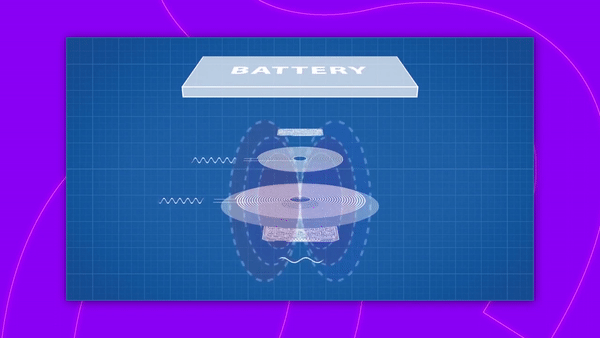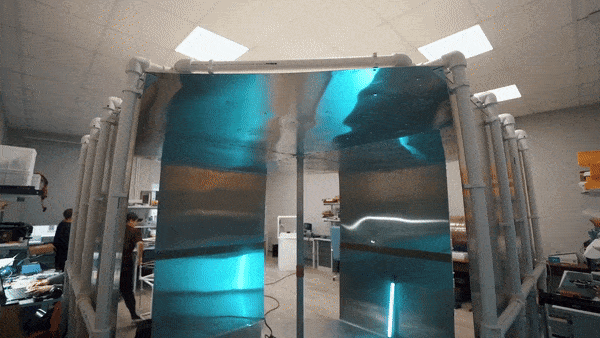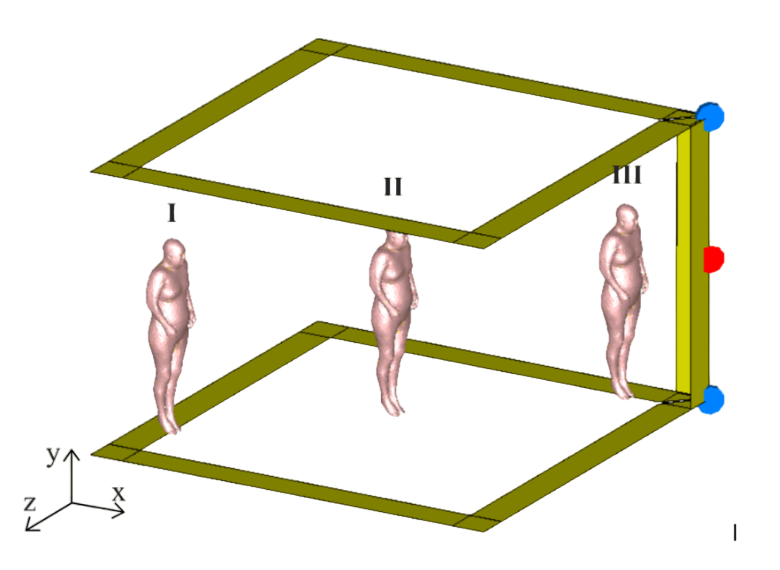New Generation of Wireless Chargers Developed at ITMO
Here is how they work and why it may change the way we go about our lives
New Generation of Wireless Chargers Developed at ITMO
Here is how they work and why it may change the way we go about our lives
Back in 2017, Apple surprised the world by showcasing a new way to charge the iPhone – not with a wire, but by placing it on top of a special pancake-shaped pad. Samsung soon introduced a similar feature. By now, almost every top-of-the-line smartphone supports wireless charging. But is this technology worth it? And will it be possible someday to have a room full of devices with no wires whatsoever?
Yes, it will! That is exactly what scientists at ITMO are working on right now. Recently, they developed a new kind of wireless charger – a box that evenly distributes a magnetic field within itself. This box can be used to charge multiple devices simultaneously simply by placing the gadgets anywhere inside the box. Read on to find out how a charger like that works, why it is completely safe, and whether it can be expanded to cover an entire room.
Back in 2017, Apple surprised the world by showcasing a new way to charge the iPhone – not with a wire, but by placing it on top of a special pancake-shaped pad. Samsung soon introduced a similar feature. By now, almost every top-of-the-line smartphone supports wireless charging. But is this technology worth it? And will it be possible someday to have a room full of devices with no wires whatsoever?
Yes, it will! That is exactly what scientists at ITMO are working on right now. Recently, they developed a new kind of wireless charger – a box that evenly distributes a magnetic field within itself. This box can be used to charge multiple devices simultaneously simply by placing the gadgets anywhere inside the box. Read on to find out how a charger like that works, why it is completely safe, and whether it can be expanded to cover an entire room.
Wireless Chargers Explained: How They Work and What Is Their Problem

To start with, let us understand their design. Inside the wireless chargers that are now used on iPhones or other modern smartphones is a special piece of wire wound into the shape of a coil. A similar coil is also built into the smartphones that support this technology.
This method of wireless power transfer is based on the law of electromagnetic induction discovered by Michael Faraday back in 1831. When an alternating current passes through a coil, electrons come into motion and surround it with an electromagnetic field. This field can, in turn, “activate” the electrons in the coils of smartphones, which charge the device.
But there is a catch: this method can only transfer energy up to 4 centimeters away, so the phone has to be practically touching the charger. Moreover, a charger from one manufacturer is not compatible with another company’s device.
What ITMO Scientists Propose

Scientists from ITMO’s Faculty of Physics have developed a Helmholtz-type resonator for wireless charging of low-power devices in a room-scale environment. The design of the room-sized resonator was inspired by the Helmholtz-type coil featuring a pair of coils of equal size arranged in parallel, connected by two conductors. The structure has the following dimensions: 3.75x3.75x2.5 cubic meters.
Based on the results of electromagnetic studies, ITMO scientists designed an experimental prototype of the room-sized Helmholtz-type resonator, matching its dimensions used in numerical setup, with an input power of 40 W. The prototype was installed on a pine timber frame, using a combination of screws and steel plates to ensure strong connections. Each strip of copper tape on the prototype was secured with steel bolts, nuts, and additional washers to ensure optimal electrical contact at the junctions.
The team also built other receivers with enlarged coils (with a diameter up to 34 cm) to power a floor lamp with a 12 W LED light bulb and a small fan. Overall, the power transfer efficiency (PTE) of the system increased to reach 12% with additional receivers because currents and, thus, power dissipation in transmitter coils were constant regardless of the number of receivers.
A unique feature of this resonator is a uniformly magnetic field distribution, reaching 91.1% coverage within 1/4 of the resonator's internal volume. This maintenance of high magnetic field uniformity contributes to a stable PTE between resonator and receiver of 200x130 cubic millimeters as observed in simulations, exhibiting only minor fluctuations within the range of 40% to 50%. Our experimental investigation successfully demonstrated the wireless charging of various devices, including a fan, a smartphone, a nightlight, and a lamp, achieving an overall PTE of 12%.

Each coil contains copper conductors with capacitors for tuning the resonator to an operational frequency of 950 kHz. Power is supplied to the resonator through a port that is connected in parallel to the Helmholtz coils. The current passes through the conductors of the resonator and generates a normal magnetic field on the copper rings and uniformly distributed within the internal volume, reaching the maximum near the conductors. It is worth noting that this mode is characterized by a highly uniform magnetic field distribution in the resonator's volume. Thus, the resonator is a transmitter of a WPT system.

Scientists from ITMO’s Faculty of Physics have developed a Helmholtz-type resonator for wireless charging of low-power devices in a room-scale environment. The design of the room-sized resonator was inspired by the Helmholtz-type coil featuring a pair of coils of equal size arranged in parallel, connected by two conductors. The structure has the following dimensions: 3.75x3.75x2.5 cubic meters.
Based on the results of electromagnetic studies, ITMO scientists designed an experimental prototype of the room-sized Helmholtz-type resonator, matching its dimensions used in numerical setup, with an input power of 40 W. The prototype was installed on a pine timber frame, using a combination of screws and steel plates to ensure strong connections. Each strip of copper tape on the prototype was secured with steel bolts, nuts, and additional washers to ensure optimal electrical contact at the junctions.
The team also built other receivers with enlarged coils (with a diameter up to 34 cm) to power a floor lamp with a 12 W LED light bulb and a small fan. Overall, the power transfer efficiency (PTE) of the system increased to reach 12% with additional receivers because currents and, thus, power dissipation in transmitter coils were constant regardless of the number of receivers.
A unique feature of this resonator is a uniformly magnetic field distribution, reaching 91.1% coverage within 1/4 of the resonator's internal volume. This maintenance of high magnetic field uniformity contributes to a stable PTE between resonator and receiver of 200x130 cubic millimeters as observed in simulations, exhibiting only minor fluctuations within the range of 40% to 50%. Our experimental investigation successfully demonstrated the wireless charging of various devices, including a fan, a smartphone, a nightlight, and a lamp, achieving an overall PTE of 12%.

Each coil contains copper conductors with capacitors for tuning the resonator to an operational frequency of 950 kHz. Power is supplied to the resonator through a port that is connected in parallel to the Helmholtz coils. The current passes through the conductors of the resonator and generates a normal magnetic field on the copper rings and uniformly distributed within the internal volume, reaching the maximum near the conductors. It is worth noting that this mode is characterized by a highly uniform magnetic field distribution in the resonator's volume. Thus, the resonator is a transmitter of a WPT system.
The Results So Far
Uniformity
Safety
Efficiency
The design by ITMO scientists distributes the oscillating magnetic field within its working area uniformly (over 80% is covered) – which is why devices can be charged anywhere within the box with the same efficiency.
Said energy transfer efficiency is over 50% ― power input of just five watts is enough to charge multiple devices
Based on an analysis of the intensities of the magnetic and electric fields, scientists have established that they comply with the notable international safety standards. Furthermore, the design does not interfere with the functions of electrical appliances on the outside of the box because the entirety of the electromagnetic field is contained within.
>80%
>50%
100%
Uniformity
Safety
Efficiency
The design by ITMO scientists distributes the oscillating magnetic field within its working area uniformly (over 80% is covered) – which is why devices can be charged anywhere within the box with the same efficiency.
Said energy transfer efficiency is over 50% ― power input of just five watts is enough to charge multiple devices.
Based on an analysis of the intensities of the magnetic and electric fields, scientists have established that they comply with the notable international safety standards. Furthermore, the design does not interfere with the functions of electrical appliances on the outside of the box because the entirety of the electromagnetic field is contained within.
>80%
>50%
100%
“The idea to construct a resonator that will create a uniform field came from a different area of study. A part of our faculty’s team spent many years developing resonant devices – wireless radiofrequency coils based on metamaterials and metasurfaces for MRI.

Alena Schelokova,
a researcher at the Faculty of Physics:
a researcher at the Faculty of Physics:
We achieved remarkable results, so at some point, Pavel Belov, our chief research associate, suggested we apply this experience to our wireless power transfer project. In MRI design, we use resonators that function at the same frequency as the whole-body coil built into the MR scanner. The coupling between the two resonators allows us to focus the magnetic field in the area that is being studied and diagnosed. This project uses a similar principle.”
For instance, ITMO scientists already developed a compact portable wireless device to screen breasts for cancerous tumors.
The researchers are also working on a portable scanner for head MRI.
The researchers are also working on a portable scanner for head MRI.
“The idea to construct a resonator that will create a uniform field came from a different area of study. A part of our faculty’s team spent many years developing resonant devices – wireless radiofrequency coils based on metamaterials and metasurfaces for MRI.

Alena Schelokova,
a researcher at the Faculty of Physics:
a researcher at the Faculty of Physics:
We achieved remarkable results, so at some point, Pavel Belov, our chief research associate, suggested we apply this experience to our wireless power transfer project. In MRI design, we use resonators that function at the same frequency as the whole-body coil built into the MR scanner. The coupling between the two resonators allows us to focus the magnetic field in the area that is being studied and diagnosed. This project uses a similar principle.”
For instance, ITMO scientists already developed a compact portable wireless device to screen breasts for cancerous tumors.
The researchers are also working on a portable scanner for head MRI.
The researchers are also working on a portable scanner for head MRI.


What’s in the Box?
E-field and SAR results
According to IEEE C95.1™-2019, the limit value of electric field intensity at 950 kHz is 595 V/m and SAR in a 10-gram mass of tissue is 10 W/kg.
IEEE C95.1™-2019
Safety
Within the operational confines of the room, safety criteria are maintained. When the model is placed at the room's central point, the SAR is approximately 92 times lower than IEEE C95.1™-2019 standard, while the electric field exposure is 2.7 lower.
To estimate the RF safety of the room, a computational model obtained from the CST library was integrated inside its space in different positions. To evaluate the exposure of the model’s tissues to electromagnetic fields, the peak specific absorption ratio (SAR) in a 10-gram mass of tissue was calculated, as well as the maximum electric field intensity inside the tissues of the model at an applied power of 357 W.


What’s in the Box?
Safety
IEEE C95.1™-2019
E-field and SAR results
To estimate the RF safety of the room, a human model obtained from the CST library was integrated inside its space in different positions. To evaluate the exposure of the model tissues to electromagnetic fields the peak specific absorption ratio (SAR) in a 10-gram mass of tissue was calculated, as well as the maximum electric field intensity inside the tissues of the human model at an applied power of 357 W.
According to IEEE C95.1™-2019, the limit value of electric field intensity at 950 kHz is 595 V/m and SAR in a 10-gram mass of tissue is 10 W/kg.
Within the operational confines of the room, safety criteria are maintained. When the human model placed at the room's central point, the SAR is approximately 92 times lower than IEEE C95.1™-2019 standard, while the electric field exposure is 2.7 lower.
Scaling Up the Box
Imagine coming home and charging your phone not by putting it on the table but inside the table, along with the rest of your gadgets. According to the developers, the design and versatility of the box allow it to be integrated into various environments – for instance, it can be embedded within a shelf or another piece of furniture.
Alternatively, the box can be a B2B product. For example, it can be scaled up to serve as a charging station for a whole group of drones or as part of operating a warehouse with several devices in need of a simultaneous recharge.
Already the team has started on their next task – scaling up their small box to be the size of a room (e.g., three by three cubic meters) that can also charge several devices simultaneously.
At this first stage, researchers have to determine the future operating frequencies of the wireless room. Low frequencies in such a large space will make it challenging to achieve the necessary magnetic field uniformity and charging efficiency. For instance, the aforementioned QI standard (the lowest of all frequencies) is unsuitable for big rooms.
There are quite a few. For example, A4WP, PMA, and Qi. Note that the Qi is among the most popular. It can be used in one of two ways: either on a low frequency – zero to five watts, or medium – up to 30-65 watts. Qi has been adopted by various manufacturers, such as Apple, Asus, Huawei, Samsung, Xiaomi, Sony, etc.
What are the existing standards of wireless power transfer?
This research project was conducted with support from the Priority 2030 program. The research team now works in several directions, with some running calculations, others administering experimental studies and hardware development, and some promoting their product while looking for new business partners. Notably, 60% of the team comprises ITMO students. However, the team plans on expanding in the future. For instance, they are looking for design specialists at this moment.
At this first stage, researchers have to determine the future operating frequencies of the wireless room. Low frequencies in such a large space will make it challenging to achieve the necessary magnetic field uniformity and charging efficiency. For instance, the aforementioned QI standard (the lowest of all frequencies) is unsuitable for big rooms.
There are quite a few. For example, A4WP, PMA, and Qi. Note that the Qi is among the most popular. It can be used in one of two ways: either on a low frequency – zero to five watts, or medium – up to 30-65 watts. Qi has been adopted by various manufacturers, such as Apple, Asus, Huawei, Samsung, Xiaomi, Sony, etc.
What are the existing standards of wireless power transfer?
This research project was conducted with support from the Priority 2030 program. The research team now works in several directions, with some running calculations, others administering experimental studies and hardware development, and some promoting their product while looking for new business partners. Notably, 60% of the team comprises ITMO students. However, the team plans on expanding in the future. For instance, they are looking for design specialists at this moment.
Research team:
Alena Schelokova, Pavel Belov, Polina Petrova, Pavel Seregin, Nikita Mikhailov, Aigerim Jandaliyeva, Mikhail Udrov, Mikhail Siganov, Aleksandra Skobeleva, Georgiy Kurganov, Leila Suleiman, Andrey Vdovenko, Sergey Vlasov, Polina Kapitanova, Irina Melchakova
Alena Schelokova, Pavel Belov, Polina Petrova, Pavel Seregin, Nikita Mikhailov, Aigerim Jandaliyeva, Mikhail Udrov, Mikhail Siganov, Aleksandra Skobeleva, Georgiy Kurganov, Leila Suleiman, Andrey Vdovenko, Sergey Vlasov, Polina Kapitanova, Irina Melchakova

Research team:
Alena Schelokova, Pavel Belov, Polina Petrova, Pavel Seregin, Nikita Mikhailov, Aigerim Jandaliyeva, Mikhail Udrov, Mikhail Siganov, Aleksandra Skobeleva, Georgiy Kurganov, Leila Suleiman, Andrey Vdovenko, Sergey Vlasov, Polina Kapitanova, Irina Melchakova
Alena Schelokova, Pavel Belov, Polina Petrova, Pavel Seregin, Nikita Mikhailov, Aigerim Jandaliyeva, Mikhail Udrov, Mikhail Siganov, Aleksandra Skobeleva, Georgiy Kurganov, Leila Suleiman, Andrey Vdovenko, Sergey Vlasov, Polina Kapitanova, Irina Melchakova
Creators:
Text by: Elena Menshikova
Photo and video content by: Dmitry Grigoryev / ITMO.NEWS, the Faculty of Physics
Layout by: Ekaterina Shevyreva
Translation by: Mikhail Evdokimov
Text by: Elena Menshikova
Photo and video content by: Dmitry Grigoryev / ITMO.NEWS, the Faculty of Physics
Layout by: Ekaterina Shevyreva
Translation by: Mikhail Evdokimov

